SERVICES
Abdominal ultrasound
A useful diagnostic tool using sound waves to look at all the organs within the abdomen. Sometimes this is useful in conjunction with radiographs (x-rays) and other times it can be a superior tool to help with a diagnosis and guide treatment.
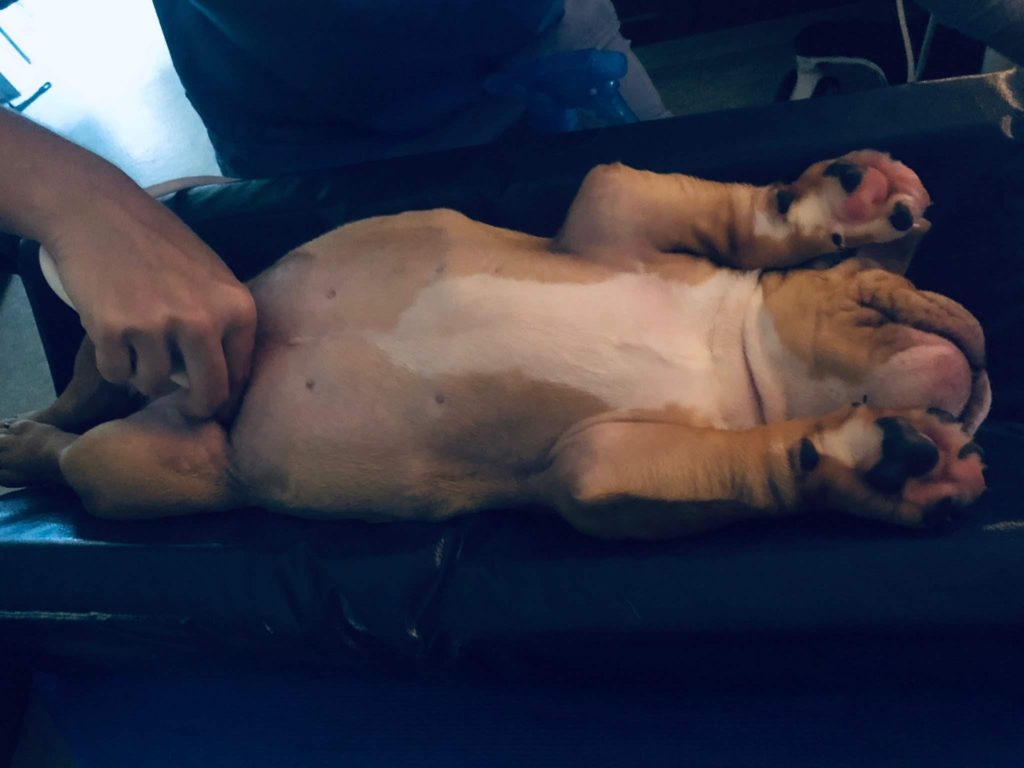
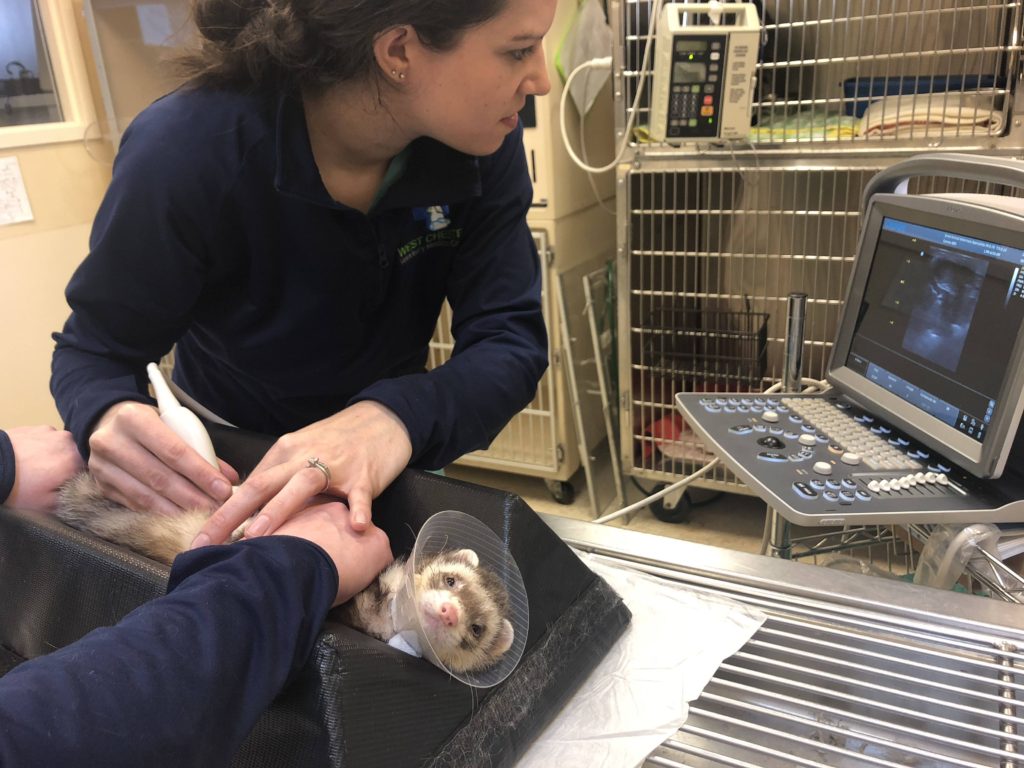
Thoracic ultrasound
Using ultrasound to evaluate for fluid within or around the lungs. This is also useful to evaluate large tumors noted on radiographs (x-rays), either within the lungs or mediastinum (the space between the lungs and around the heart).
Echocardiography
Using ultrasound to evaluate the structure and function of the heart. This is helpful when heart murmurs are heard, or when the heart or blood vessels appear abnormal on radiographs (x-rays). When a cat or dog is coughing, it is also useful to distinguish between a problem with the heart and a problem in the lungs.
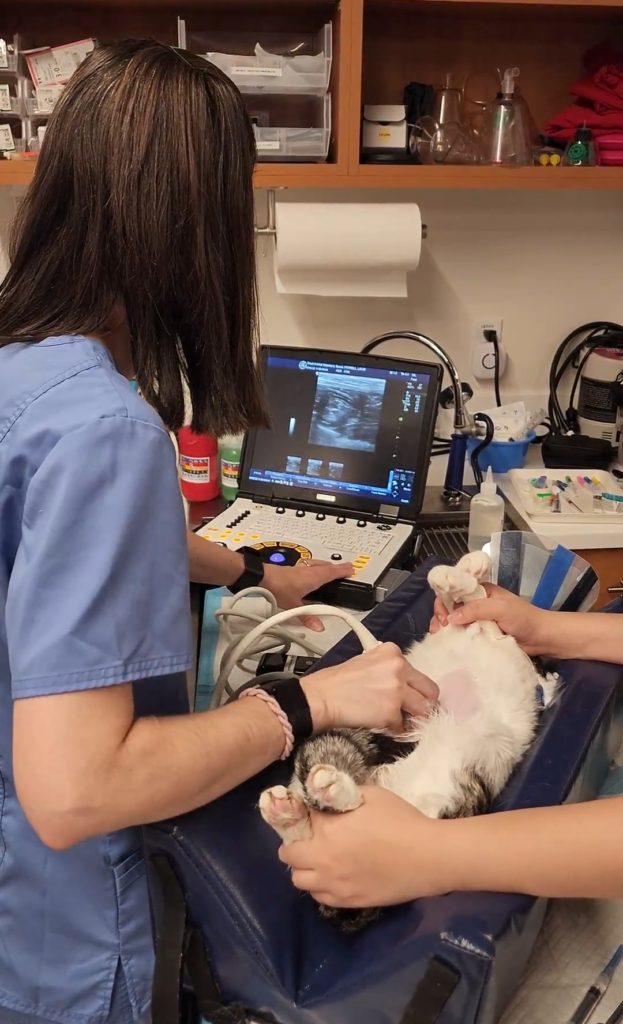
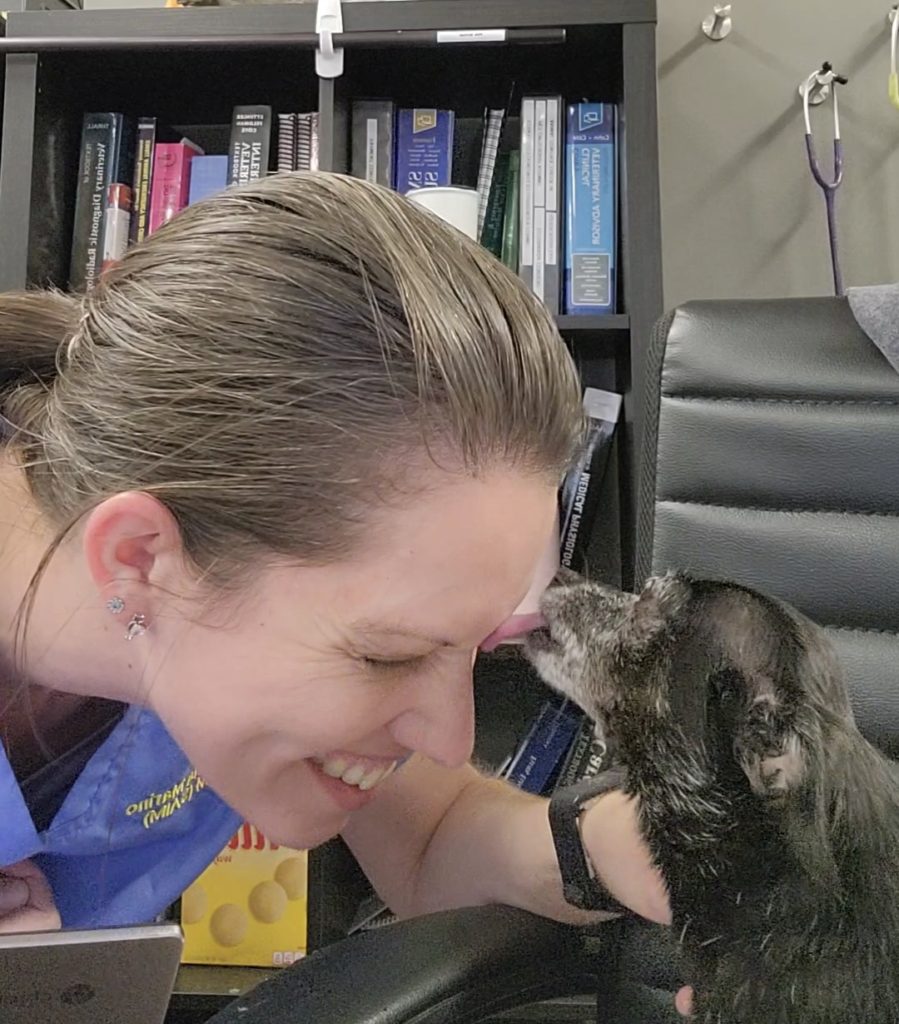
Minimally invasive sampling
The ultrasound can be used to guide different size needles into various organs within the abdomen or chest to get a sample. These samples are then sent to a lab to help with diagnosis and guide treatment.
Other services
Formal internal medicine consults are available upon request. Other services, such as bone marrow aspirates, airway sampling (endotracheal or transtracheal wash), and joint sampling are available upon request. Please contact for more information.
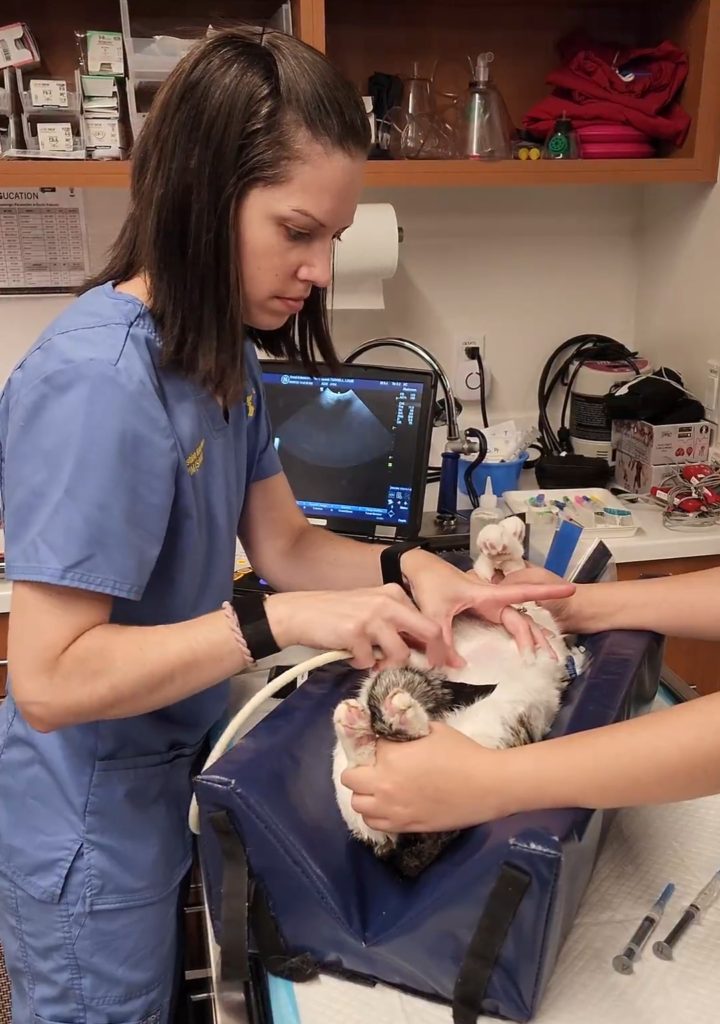
FAQ
when do we get the reports?
The reports for all services are written immediately after the ultrasound is performed. Dr. Marino interprets all images from all scans herself, include echocardiogram images.
how much notice do you need?
We can set it up as an on call service or as a scheduled service. On call services will include same day ultrasounds if notified before a certain time. Scheduled services will happen on an agreed upon day where cases are typically stacked.
how many people do you need to help hold?
One person is often enough, even for anxious dogs or scared cats.
Do we need to shave the fur beforehand?
There is no need to shave the fur beforehand. Dr. Marino prefers to shave the fur in a tasteful manner, and also brings her own clippers.
Do you need a special dark room?
Dr. Marino can do an ultrasound in any part of the hospital, even the middle of a treatment room. It does not have to be dark. It does not have to be a dedicated area or exam room.
do you require sedation?
Sedation is not required. Dr. Marino will do everything to prevent the need for sedation; however, if the safety of the pet or staff are in danger, sedation will be needed. Oral sedation prior to the procedures is preferred (trazadone or gabapentin).